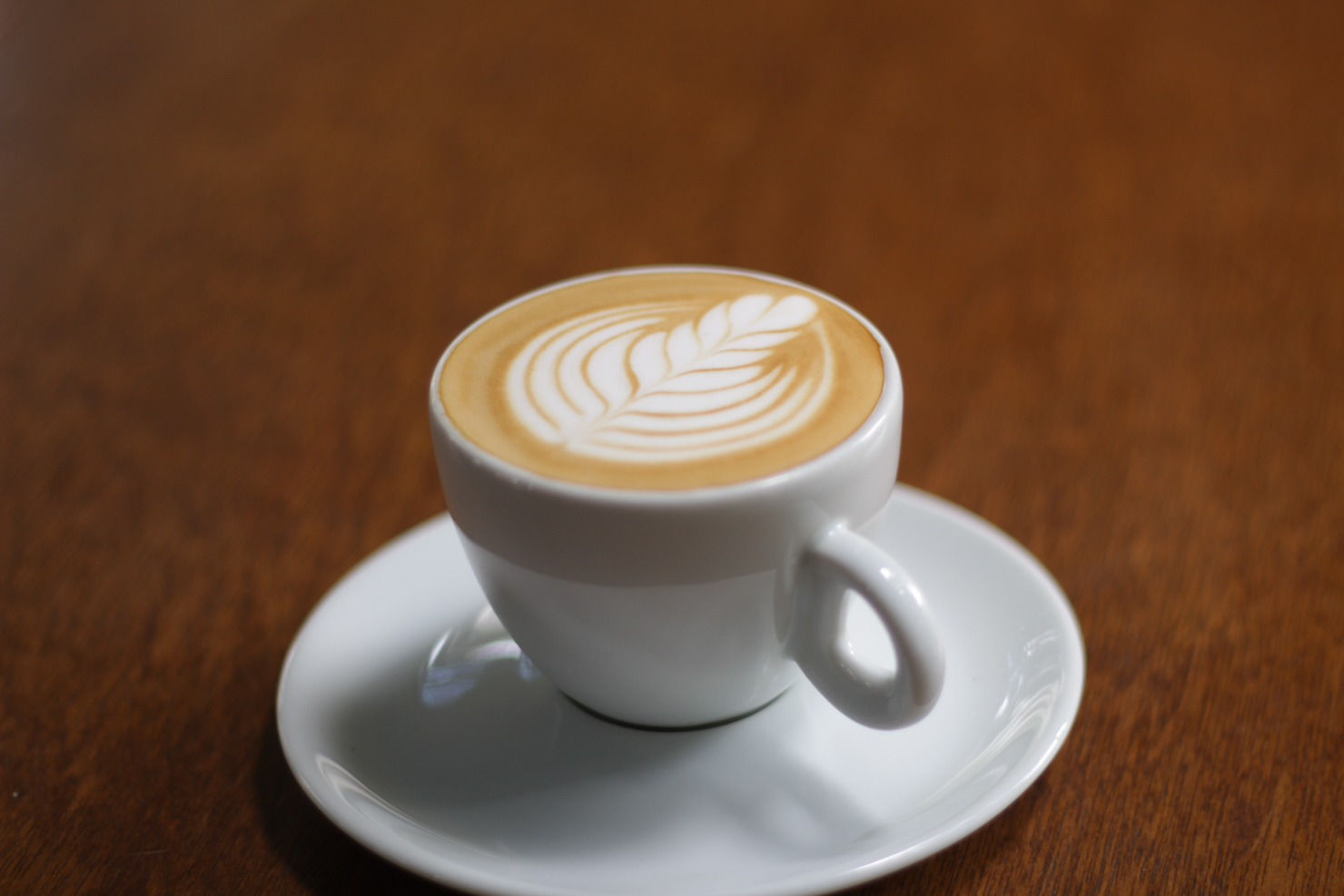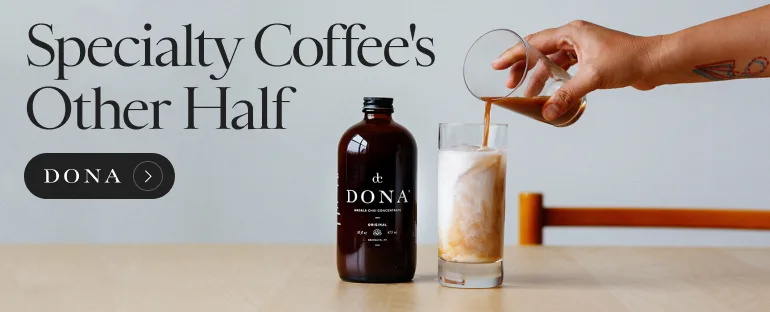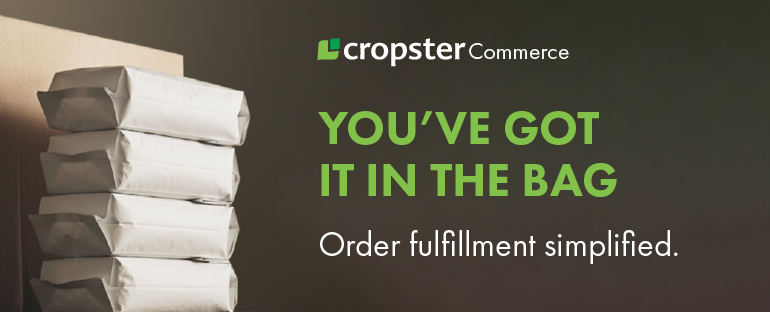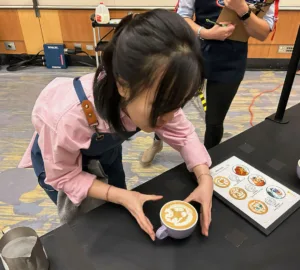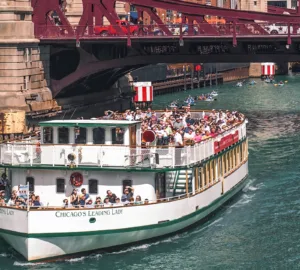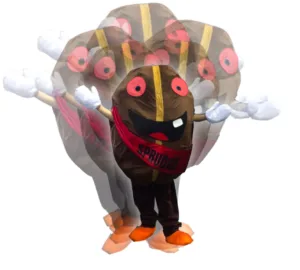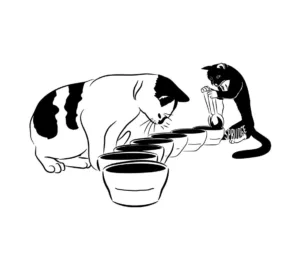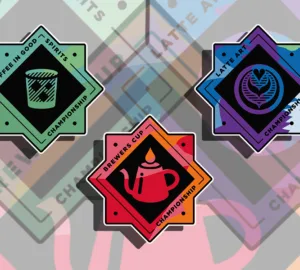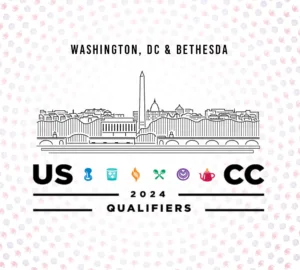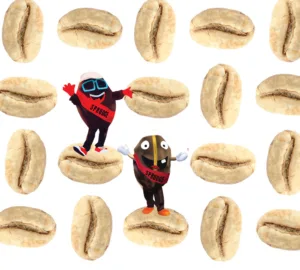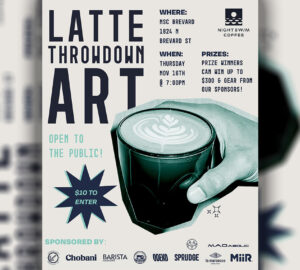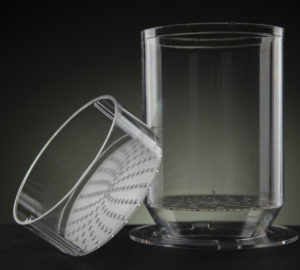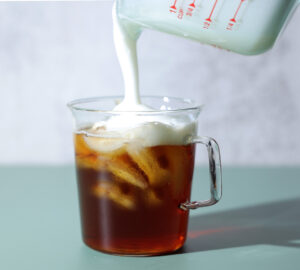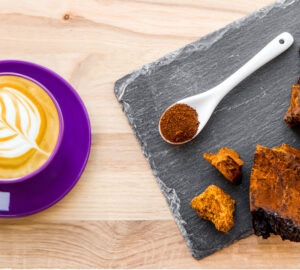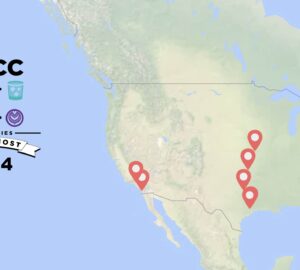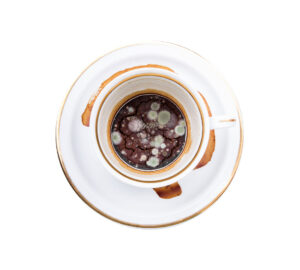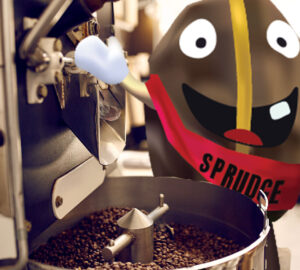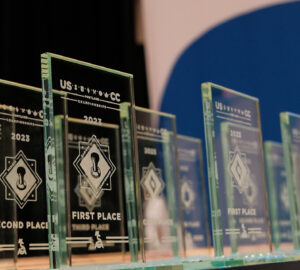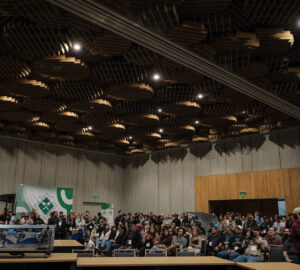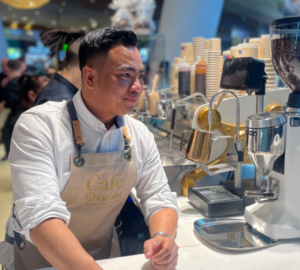Come and sit on grandma’s knee, and let me tell you how it used to be. Back in my day, when you ordered a fancy coffee drink with milk, it was quite likely for it to be served to you with either a poufy, airy dollop of bath-suds-like foam on top—or worse, nothing at all! Just a milky coffee made with espresso. I know, I know. How did we live?
Nowadays, many of us take for granted that ordering a cappuccino, latte, mocha, or flat white will get you not only a delicious coffee, but a beautiful one to boot. What’s changed? The cultural ascendancy of latte art as an expected and beloved component of the modern coffee drinking experience.
What is latte art?
Latte art is the design you see on top of (typically) drinks like lattes, cappuccinos, and similar milk-and-espresso beverages.
Are there different kinds of latte art?
Yes. The most popular style of latte art among coffee aficionados and specialty shops is free-pour latte art, which is a pattern intentionally poured into the coffee by using milk (or a milk substitute) steamed into compact bubbles. The milk is then poured into the coffee with careful movements—angle and height matter here—to create the desired pattern, such as a rosetta, tulip, or heart. More elaborate patterns are also possible with free pour, but if you’re just picking up a morning cappuccino, you’re most likely to see one of the basic designs.
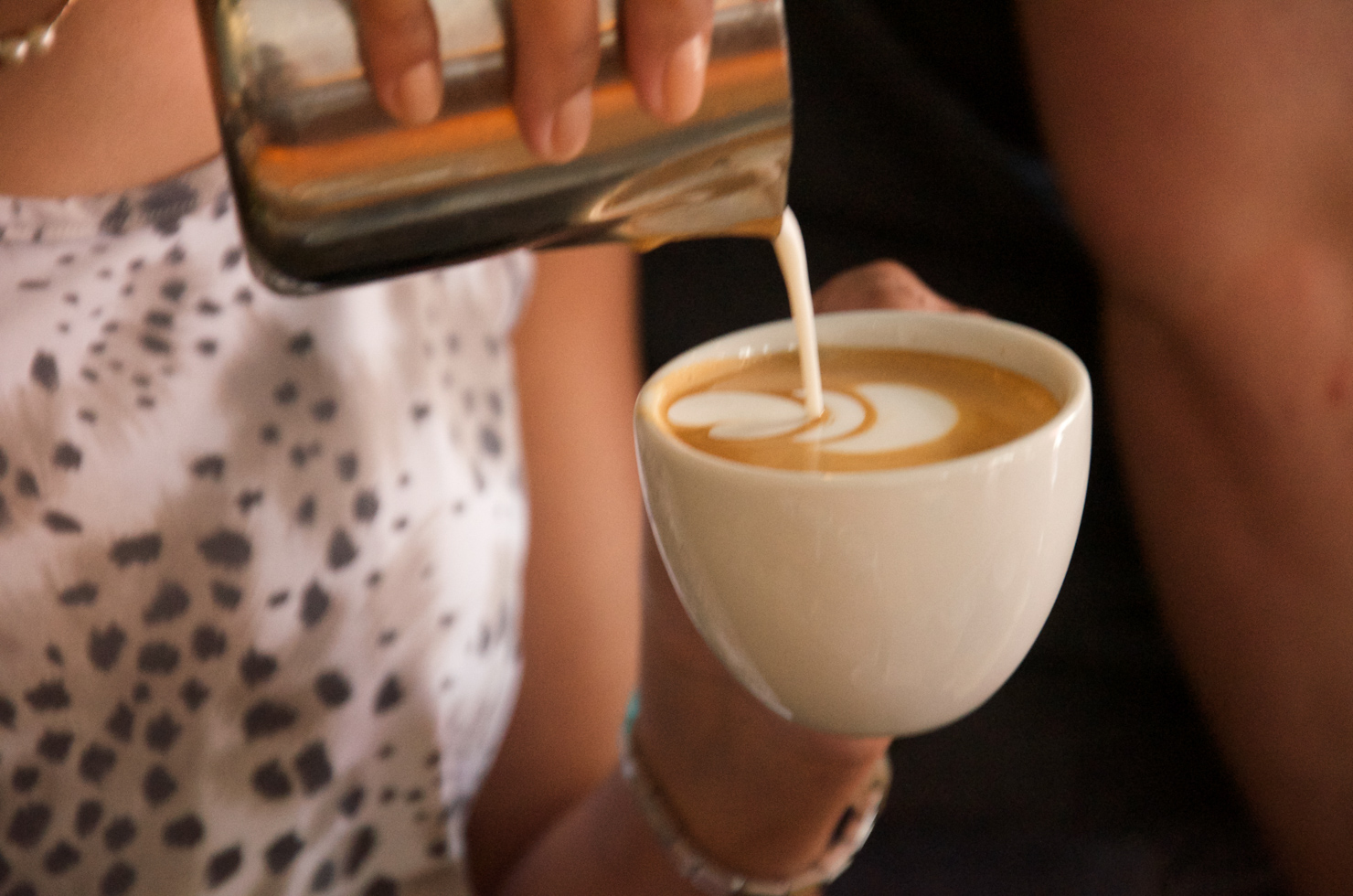
Some coffee shops that take a more whimsical approach to presentation will use additional techniques, and utensils, to create designs on your coffee. Etching is a form of manipulating coffee and foam (or syrup) to create a pattern, basically drawing on the coffee with a stylus of some kind. Foam can also be sculpted into shapes, like the “cat escaping from cup of coffee” design you may have seen on the Internet. Pictures can be made on top of coffee by use of cocoa powder and a stencil, or even 3D-printed latte art techniques—though everything except free-poured art falls somewhat outside of the canon for most purists.
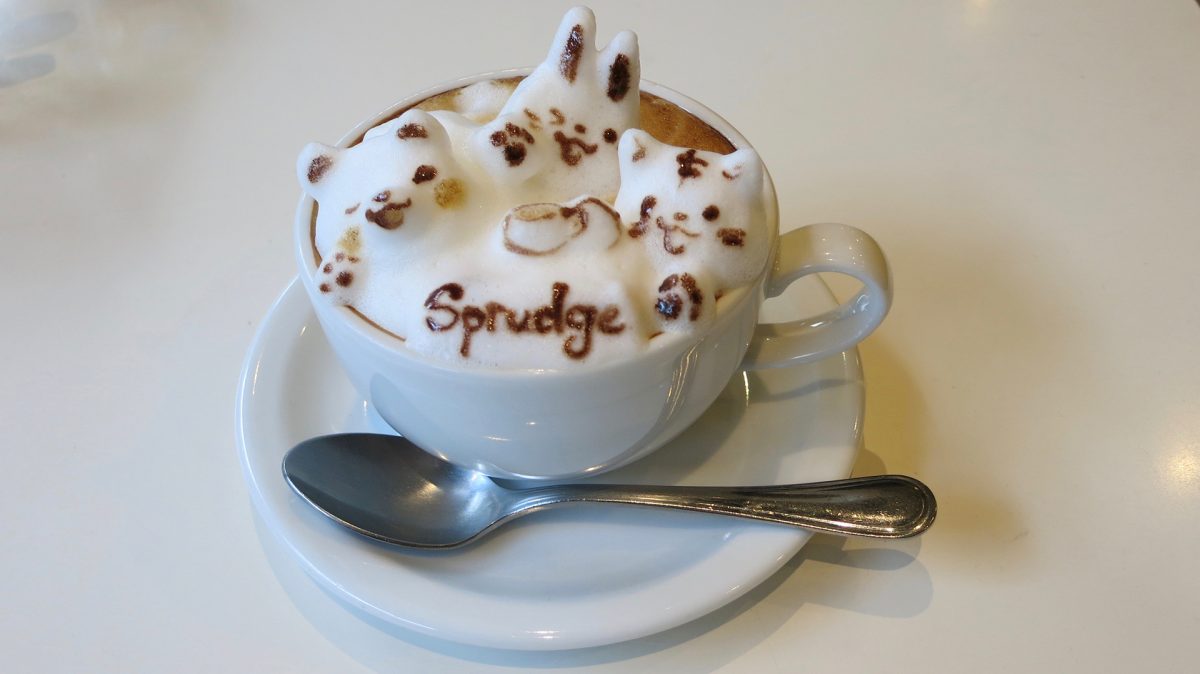
Where will I find latte art?
Many cafes now serve coffee with some degree of latte art depending on the skill of the baristas. The presence of latte art was once thought to help signal whether or not a coffee shop was part of coffee’s Third Wave, a movement where more conscientious attention to sourcing, roasting, storytelling, and presentation of coffee had taken hold. But if you look at the poster outside your nearest bodega or convenience store, you may rightly suspect that latte art (or the idea of it) has become somewhat mainstream.
How does latte art work?
Latte art begins by steaming milk or a substitute with precision into a thick, but not frothy, state baristas call “microfoam”. Both the bubble size and temperature the milk is steamed to will affect the ability to work with the milk easily. Once steamed, the milk is poured with precision into a vessel that already contains espresso. The contrast between the dark, rich color of the espresso and the white of the milk creates shapes and linear definition between the two liquids, allowing patterns to emerge. Latte art can also be poured into matcha, hot chocolate, turmeric lattes, and other beverages that provide good color contrast. Latte art can be made with milk substitutes, too, like oat, soy, and nut milks.
Most important in creating latte art is the skill of the barista: knowing the right texture and volume to develop in the milk, what temperature to make it, the angle and closeness at which to pour, how much milk to pour to achieve a tight surface tension, even how to stand when you pour.
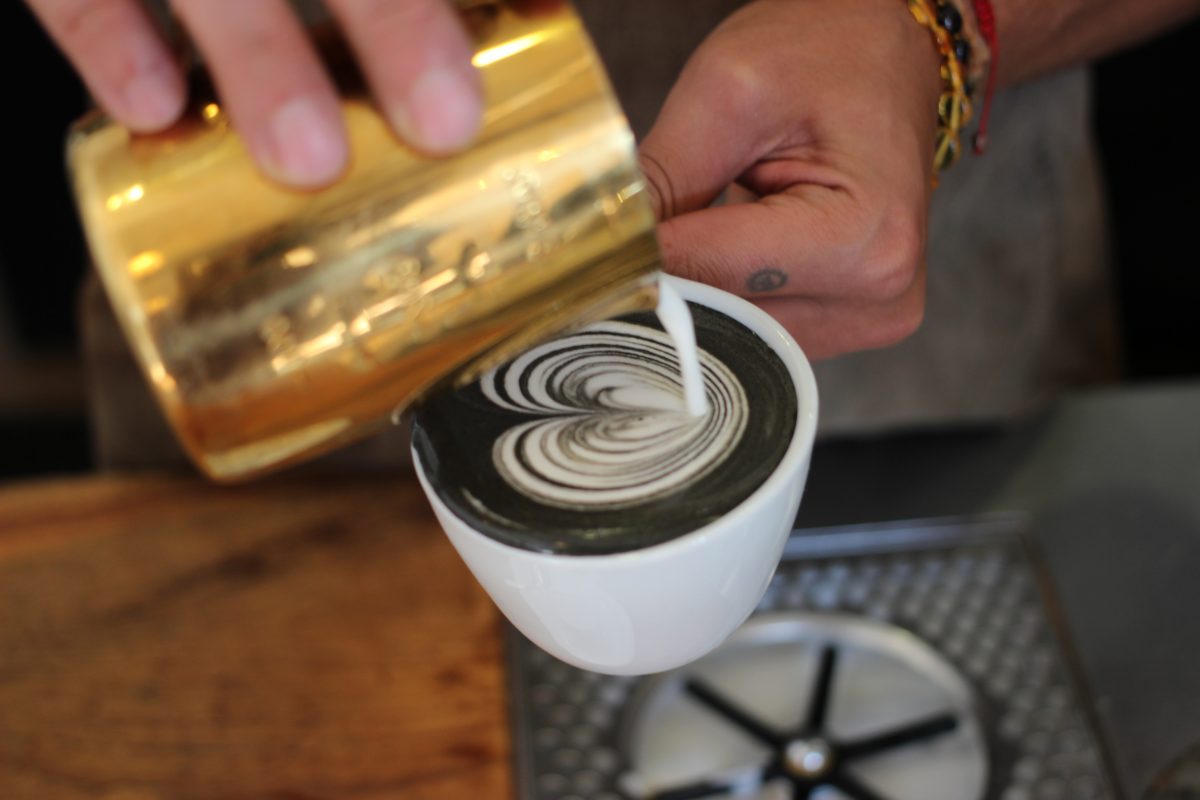
To achieve microfoam, says Nicely Alameda, veteran latte art competitor and co-owner of Dayglow Coffee, you’re looking to integrate air into the milk pitcher to cause it to expand—but not too much air. “When I steam milk I aim for between a 15-20% expansion for almost any given drink.” Alameda adds that when he trains beginning latte artists he teaches them to follow not only visual cues, but aural ones.
“Paying attention to the sound of the milk is a crucial part of my training, because where we understand that the quality of the air being introduced ends up influencing your actual yield of foam,” says Alameda. With practice, a skilled barista will be able to use their senses of sight, hearing, and touch to know when milk is ready.
Are there famous latte artisans?
Yes! Probably the most famous person in North American latte is David Schomer, founder of Seattle’s Espresso Vivace. Schomer literally wrote the book on professional espresso techniques—it’s called Espresso Coffee: Professional Techniques—in the late 1990s, and his legendary walk-up espresso bar and cafes in Seattle were key to popularizing the art of microfoam and coffee. (Alameda notes that it was during his time training at Espresso Vivace that Schomer’s team taught him the ability to “stay present with the milk.”)
Other famous latte artisans have gained international acclaim through contests like the World Latte Art Championship. Barista/author/skater Hiroshi Sawada is one champion who has turned his latte art notoriety into a successful business, bringing his expertise from Japan to cafe outlets in Chicago and New York City.
Latte art masters may be capable of free-pouring unique and impressive designs, such as swans, frolicking woodland creatures, and multiple rosettas, and more. 2019 World Latte Art Champion Manuela Fensore of Italy earned her title with a routine that included “Horse’s Face in its Purest Expression,” “The Eagle,” and “Happy Parrot Swaying on the Swing.”
Liz Clayton is the Associate Editor at Sprudge Media Network. Read more Liz Clayton for Sprudge.
Explore more latte art coverage in our archives.
Top photo by Juliana Ganan.











